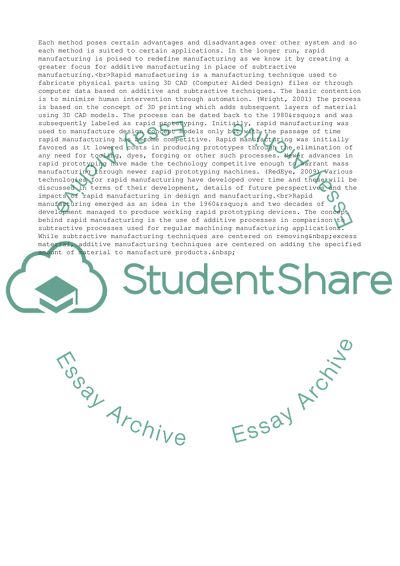Cite this document
(Rapid manufacturing and its Practical Versions Assignment, n.d.)
Rapid manufacturing and its Practical Versions Assignment. Retrieved from https://studentshare.org/business/1755183-the-latest-developments-in-rapid-manufacturing-technology-and-its-future-impact-to-design-and-manufacturing
Rapid manufacturing and its Practical Versions Assignment. Retrieved from https://studentshare.org/business/1755183-the-latest-developments-in-rapid-manufacturing-technology-and-its-future-impact-to-design-and-manufacturing
(Rapid Manufacturing and Its Practical Versions Assignment)
Rapid Manufacturing and Its Practical Versions Assignment. https://studentshare.org/business/1755183-the-latest-developments-in-rapid-manufacturing-technology-and-its-future-impact-to-design-and-manufacturing.
Rapid Manufacturing and Its Practical Versions Assignment. https://studentshare.org/business/1755183-the-latest-developments-in-rapid-manufacturing-technology-and-its-future-impact-to-design-and-manufacturing.
“Rapid Manufacturing and Its Practical Versions Assignment”, n.d. https://studentshare.org/business/1755183-the-latest-developments-in-rapid-manufacturing-technology-and-its-future-impact-to-design-and-manufacturing.


